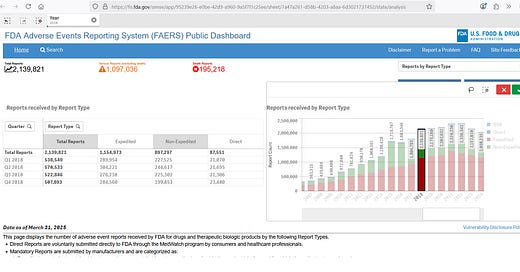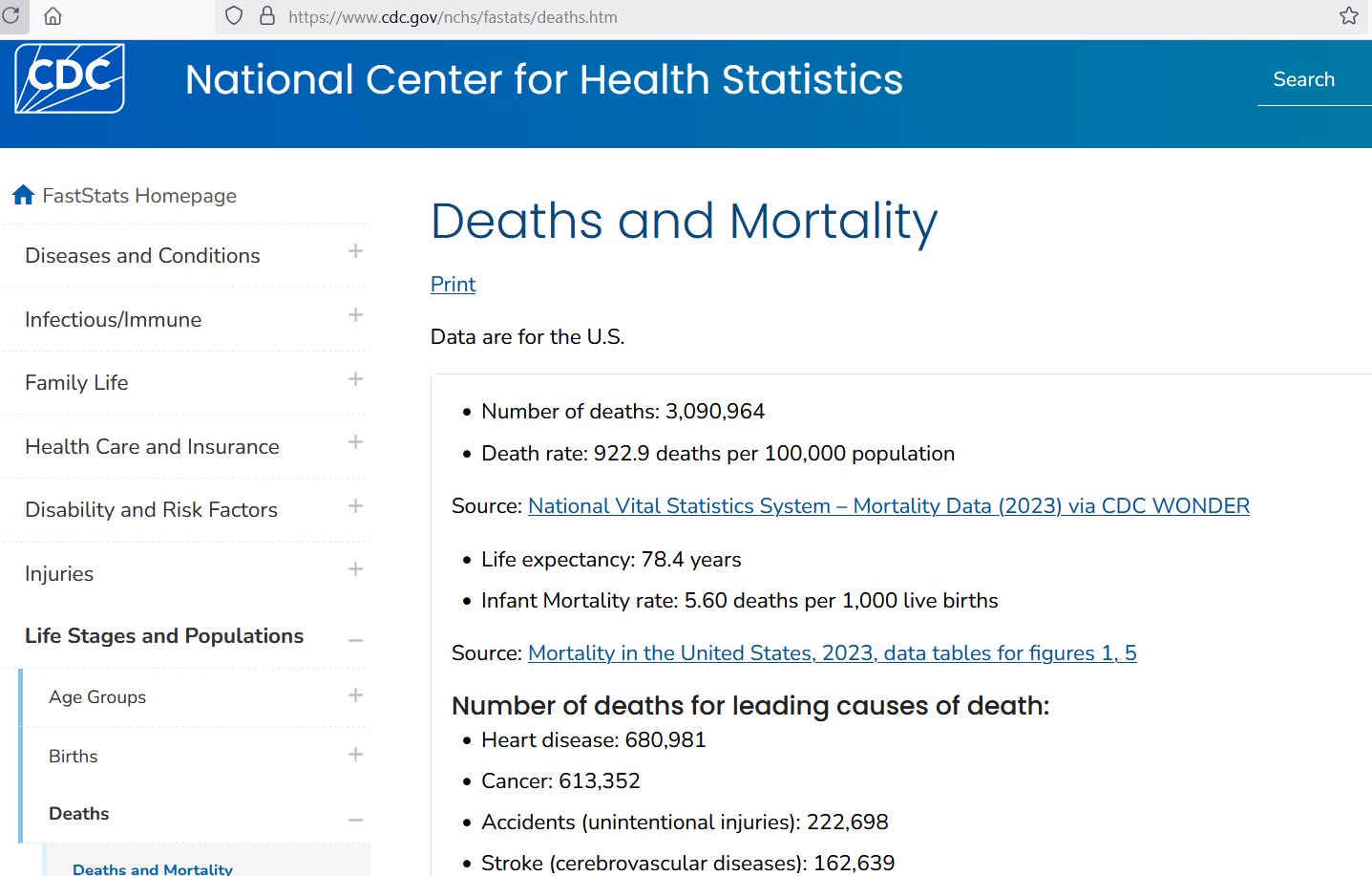FDA maintains a system of passive reporting of adverse events after consuming various prescription pharmaceuticals. Like the VAERS system for vaccines, FDA’s FAERS system is prone to under-reporting. Even so, check out the number of fatal adverse drug event reports for the year of 2018 (top-center in red):
[click to enlarge]
Here are the yearly fatal adverse drug event reports from 1982 up to 2023:
Something is definitely amiss here, because of such growth in reports of death since 2007. But as said before, even serious adverse drug events (like death) are largely under-reported to the tune of about 80% of them going by unreported:
That leaves 20% of the serious adverse events that occur in the background eventually making it into a system of passive (spontaneous) reporting such as the FAERS system. But if only 20% get reported, then the observed reports must be multiplied by a factor of 5x to estimate the true rate of serious events happening in the background:
By 2018, these yearly deaths, purportedly from reaction to prescription drugs, approached one million. For perspective, only ~3 million persons die each year, and heart disease is the officially-agreed-upon cause of almost 700,000 of them:
Here is the share of all US deaths that are estimated to have come from someone having a bad (lethal) reaction to a prescription drug:
The evidence suggests that FDA needs an overhaul, because it appears to have been operating as a stooge of Big Pharma, rather than as a protectorate of the people.
Reference
{FDA database of adverse drug event reports] — FDA. https://www.fda.gov/drugs/fdas-adverse-event-reporting-system-faers/fda-adverse-event-reporting-system-faers-public-dashboard
[the lowest multiplication factor for spontaneous reporting is 5] — Hazell L, Shakir SA. Under-reporting of adverse drug reactions : a systematic review. Drug Saf. 2006;29(5):385-96. doi: 10.2165/00002018-200629050-00003. PMID: 16689555. https://pubmed.ncbi.nlm.nih.gov/16689555/









